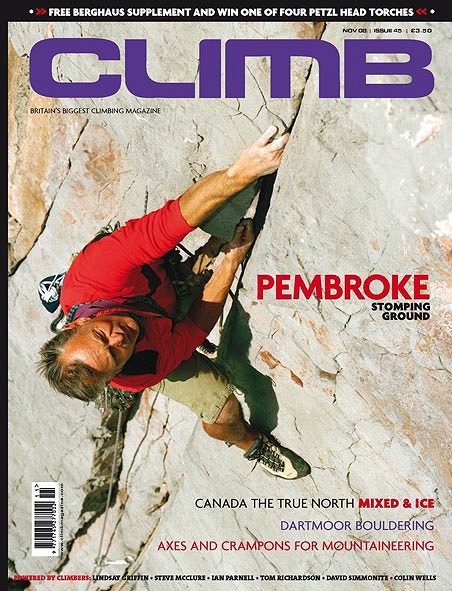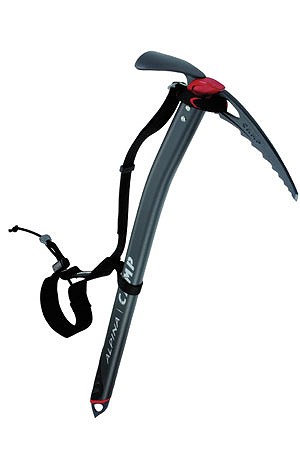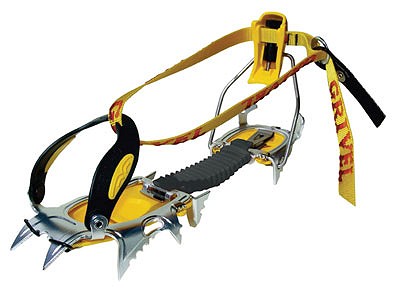


STOMPING GROUNDS: Emma Alsford and Pembroke


Becks Bay is a much overlooked area of Pembrokeshire climbing, though not entirely surprising given the comparable stature of the routes further west. Even Paul and I took a while to discover the quirky and heavily water-worn gems that make up the majority of routes here, which are littered with threads, blow holes and miniature caverns.
In fact, it was as late as 1996 that we began wandering along the stretch of coastline east of Lydstep. However, first impressions and a high tide can give these cliffs a somewhat insignificant appearance, so it took merely a light drizzle to get me into the nearest café, while Paul and Stefan Doerr became the creators of Magic Flute, the first of many small gems to adorn the bay.
The route is water-worn but featured low down, with a ramp leading to a rather unique solution tube, and after some 'worm on a hook' manoeuvres up this, exits up a short but steep finish, with some much appreciated hidden holds.
I was most disappointed to miss out on the first ascent but have nevertheless climbed the route several times since, with an assortment of different partners. It was the most recent ascent that reminded me, it isn't only the big and remote routes that give birth to adventurous spirits... I was climbing with a friend Nina and my 18-year-old niece, Abigail, who was showing some real potential at the climbing wall, so I decided it was time for the real thing. My first mistake was wrongly remembering the route as an easy HVS, and my second was choosing to do it on an incoming tide. After commendable efforts on the crux, Abigail was nevertheless unable to advance and, with quick decisions having to be made, was promptly lowered into the sea! As if wading out waist deep in April seas (or is that fools?!) wasn't bad enough, she then had to negotiate a solid enough route up the slightly tottering and insecure gully on the west side of the bay, the only feasible access to the cliff top.
DARTMOOR

Few regions of open country remain as wrapped in myth and narrative as Dartmoor: Arthur Conan Doyle's gothic masterpiece The Hound of the Baskervilles is perhaps the most celebrated account of the Moor's supernatural powers, but by no means the most extravagant. Dartmoor is purportedly a haunt of pixies, a headless horseman, an entire pack of spectral hounds to outnumber Conan Doyle's single one, and a notorious pair of 'hairy hands' that are said to attack travellers on the B3212 near Two Bridges. In 1638 the Devil himself paid a fleeting visit, when the church of St Pancras in Widdecombe was struck by one of the earliest recorded cases of ball lightning during a severe thunderstorm, which killed several members of the congregation.
Such esoterica is not without interest, but is perhaps of less significance to the visiting climber than the 160 or so granite tors that lie strewn across the Moor. These range in size and prominence from the largest – the 50 metre west face of Low Man at Haytor and the leafy bulk of Dewerstone in the Plym Valley – to innumerable smaller outcrops. There are so many diminutive crags and tors on Dartmoor that to list them all individually would take up the rest of this article! Whilst the Moor's larger cliffs have been climbed on for decades, and virtually all of their major lines are now worked out, it is only in recent years that the colossal bouldering potential here has been acknowledged.
GEAR: CRAMPONS AND AXES


Perhaps spurred by the intake of the local beverages and in a state of 'over-refreshment' we found ourselves in a heated conversation about what exactly is mountaineering. I'm sure you know the sort of thing. It could have been about football, politics, early Byzantine Ceramics, Celine Dion or anything. For us it was “what is mountaineering?” Fortunately, standing near us at the bar was a man who would know. It was Alan Hinkes.
“Scho, what izzz mountaineering Al?” I slurred. “When duzzz it stop being trekking or begin being climbing?” I slurred again.
Obviously a few beers behind us, he just calmly said that in the mountains we are all mountaineers.
A good answer, aside from getting picky about whether a shepherd or a helicopter pilot for example count, but it certainly shut me up!
For the sake of this article I am discussing crampons and ice axes that we would use in the mountains on all but the steepest and most technical terrain. It's the sort of gear that is great for most alpine climbing and for use on Scottish winter ridges and routes up to the grade II/III sort of ground. In fact it is the gear that most of us have for most of our mountaineering. I will be covering the other bit, tools for steep ice in a few months time.
Crampons

Like lots of inventions, deciding who invented the crampon is a case of the winner takes all. Ideas do not often come out of the blue. Usually the final result is the work of many people who have contributed to the idea a bit until finally it works. People have been tying things onto their feet to assist them moving over snow and ice for hundreds of years. Specimens have been found that date from 500BC.The earliest mention in climbing according to Walt Unsworth's Encyclopaedia of Mountaineering is in 1689 when they were used to cross the Col du Geant. The winner of the credit for the invention in this case however was a British mountaineer with a rather unBritish name – Oscar Eckenstein who takes the prize in about 1910 as the inventor of the modern crampon.
In fact he only really redesigned them based on versions made by unnamed village blacksmiths in the Austrian Tyrol. Rather than people rushing up to him and shaking him by the hand and asking where they could buy a pair, the development/invention was rather controversial. Many experienced (read 'older') climbers thought it was cheating, dangerous and immoral. Step cutting was the true way. If you were climbing throughout the last two or three decades in the UK you may recognise the pattern. For us it has been chalk then competitions and then bolts that are cheating, dangerous and immoral.
COMPETITION

WE HAVE 4 ULTRAS TPO GIVE AWAY
WORTH £260 each
QUESTION:

Myo 5
Myo Belt
Myobelt SB 5
Saxar
Saxo
Tactikka XP Adapt
Tikka
Tikkila
Tikkina
Tikka XP
Zipka
Zipka XP
Zoomicro
Zoom Zenda
Zoom Zora
To enter visit www.climbmagazine.com
Competitions at www.climbmagazine.com
FREE Mountain INFO downloads at Climb Magazine

Mountain INFO is now exclusively available on-line via the Climb Magazine website FREE!! This internationally acclaimed resource has been added to our extensive online 'Archives' as a fully downloadable pdf. You will be able to view and print off Mountain INFO at the touch of a button, 24/7 via the Climb website at www.climbmagazine.com
For over 35 years Mountain INFO has been the essential place to research Alpinism, big walls and mountaineering expeditions throughout the world. An intrinsic part of Climb Magazine, Mountain INFO is edited by the well known and respected mountaineer, Lindsay Griffin, who uses his worldwide contacts, built up over many years - to bring first-class information and quality images to you. Now, to enable you to access this massive resource more easily we are making it freely available online. Search for places of interest to plan your next expedition and keep yourself up-to-date with what is happening in the world of mountaineering.
Log on and access every Mountain INFO published in Climb Magazine since March 2005. As with all of our 'Archives', we will continue to add to this section, eventually including the early days of High Mountain Sports.
UKCLIMBING.COM READER SUBSCRIPTION OFFER
Subscribe online at www.climbmagazine.com
We are offering all UKClimbing.com readers the opportunity to benefit from special reduced rates when subscribing to Climb Magazine.
For a limited period only you can save a massive £29.00!*
Exclusive Discounted Rates
1 yr (12 issues) RRP £42.00 - UKC Special Rate £30.00
2yr (24 issues) RRP £84.00 - UKC Special Rate £55.00
In order to qualify for these special rates simply log onto the Climb website and enter the following promo codes:
1yr - EARLYUKONE
2yr - EARLYUKTWO
* Based upon a UK 2yr subscription.
* Overseas readers can also benefit from the offer – simply contact [email protected] for your unique promo code.
- Receive your issue direct to your door every month
- Free Delivery
- Keep up to date with the latest news & Info
Subscribe online at www.climbmagazine.com








Comments